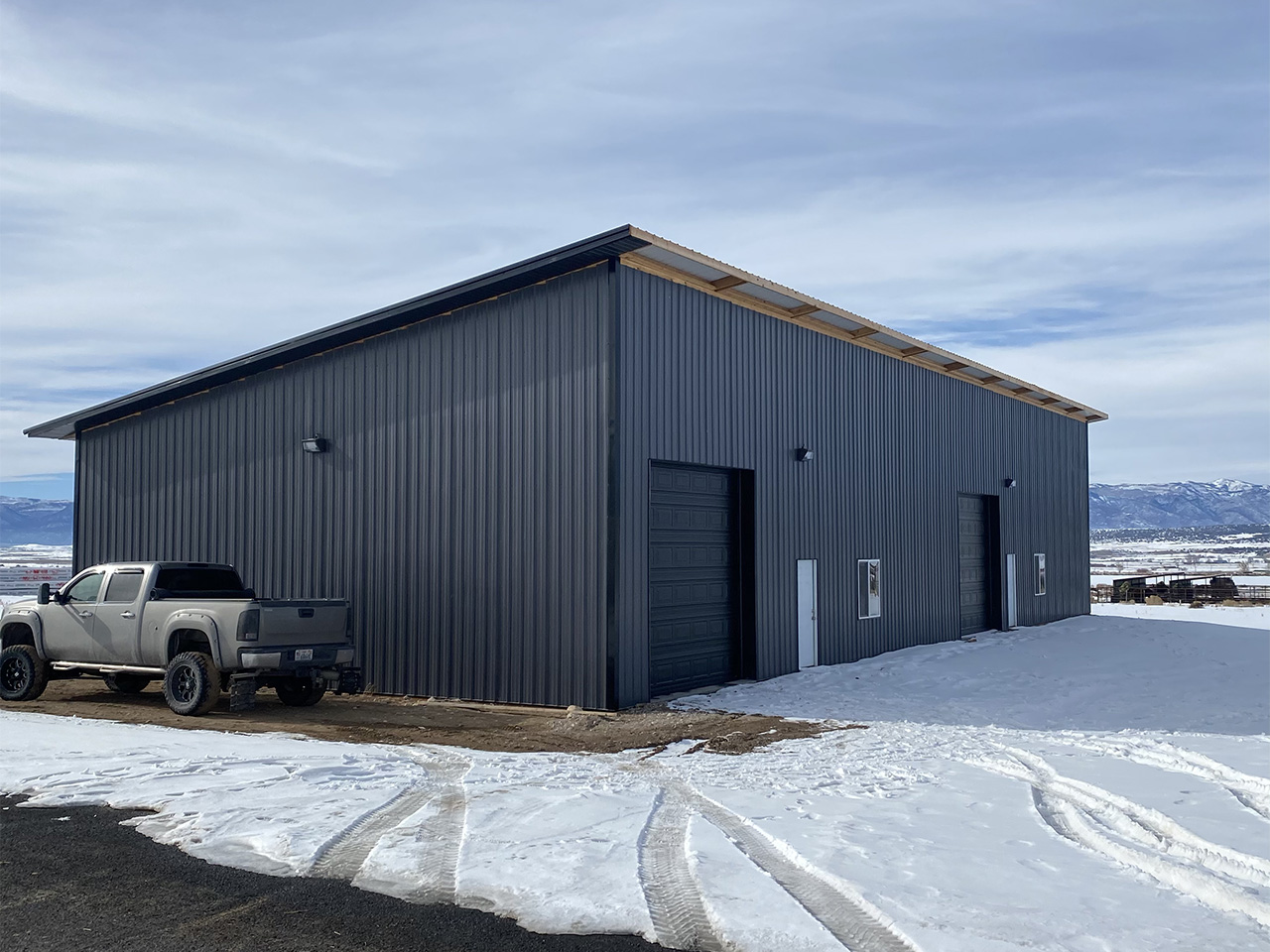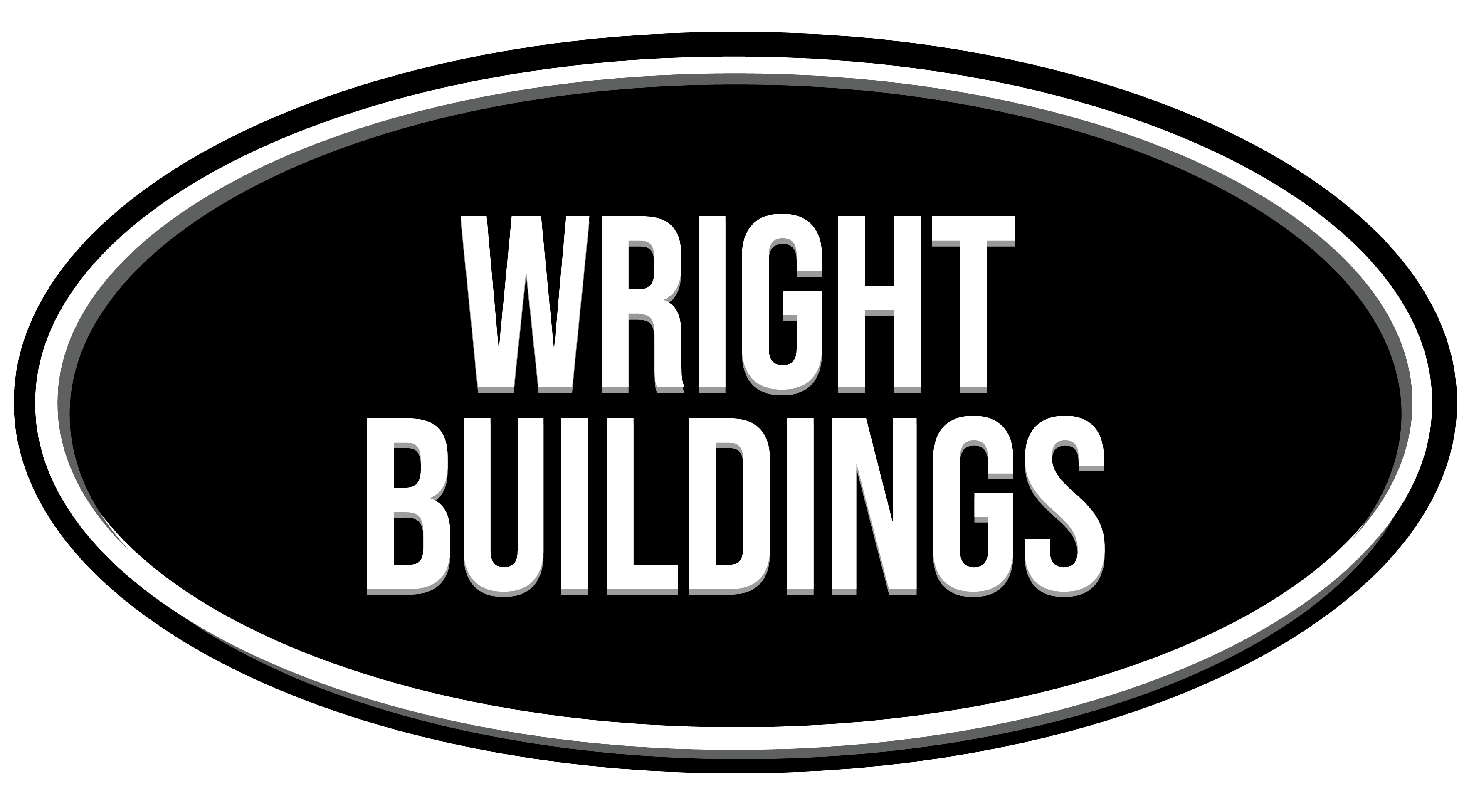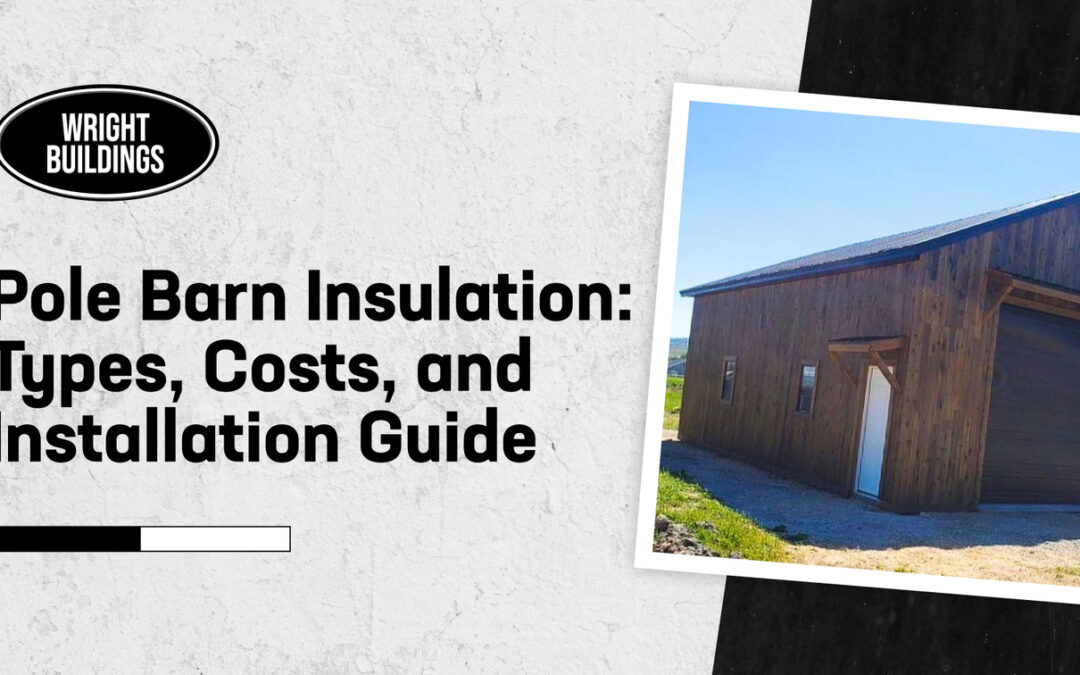Insulating your pole barn is one of the smartest investments you can make. Without pole barn insulation, extreme temperatures can make the space uncomfortable and even damage stored items. The right insulation helps control heat, reduces moisture, and saves energy.
Many people overlook how much pole barn insulation affects durability and efficiency. A well-insulated barn stays cooler in the summer and warmer in the winter. It also prevents issues like mold, condensation, and high energy bills.
Keep reading to learn about the best insulation options, costs, and how to install them properly.
Table Of Contents:
- Why Insulate Your Pole Barn?
- Choosing the Right Pole Barn Insulation
- Cost of Insulation
- Pole Barn Insulation: Installation Tips
- Addressing Moisture and Condensation
- Heating and Cooling Options for Your Insulated Pole Barn
- How Wright Buildings Enhances Your Pole Barn with Expert Insulation
- FAQs about Pole Barn Insulation
- Conclusion
Why Insulate Your Pole Barn?
Pole barn insulation offers immediate and long-term benefits. It’s an investment that pays off by improving building lifespan, temperature regulation, energy saving and even moisture accumulation.

Comfort and Temperature Control
Insulation makes your pole barn comfortable year-round. It keeps you cool in the summer and warm in the winter, much like an insulation blanket for your building. This is especially important for livestock, as temperature extremes can impact animal safety.
Using a thermal break within wall insulation, or closed-cell foam for barn ceilings can even further enhance insulation against these extreme temperatures swings and ensure your building temperature never varies from what is most desired.
Protect Your Investments
Insulation safeguards your stored items from temperature fluctuations and moisture. Whether you are trying to create energy efficient temperature controlled storage space, or avoid excessive humidity levels around farm machinery, it will help protect the equipment, tools, or supplies inside. For additional moisture control, consider using a vapor retarder for further protection.
Energy Efficiency
Proper insulation leads to energy efficiency and lower utility bills by stabilizing internal temperatures. Energy Star rated products can provide additional cost savings and contribute to lower heat flow.
Choosing the Right Pole Barn Insulation
Selecting the right insulation for your pole barn involves matching the material to the building’s specific needs. Several insulation options exist. Some include batt insulation rolls, fiberglass blankets, or even rigid foam boards for maximum insulating value.

Batt Insulation
Fiberglass batts are a budget-friendly and easy-to-install insulation option for your pole building. They offer good temperature regulation and moisture prevention, making them a cost-effective choice. Consider adding faced fiberglass insulation, which already includes a vinyl facing that acts as a vapor barrier to stop moisture from getting to the metal.
Spray Foam Insulation
Spray foam insulation provides excellent air sealing and higher-quality temperature control because it fills all gaps and cracks within a pole barn wall or pole barn ceilings. It’s important to understand what is the proper insulation technique as using high R-value insulation improperly may reduce its long-term effect or create moisture damage that may rot supports or otherwise negatively impact the life span of materials.
When installed by an experienced professional its closed-cell structure provides great insulation for the proper cost.
Rigid Foam Insulation
Rigid foam insulation boards offer high R-values and excellent thermal performance. Their moisture resistance is an added benefit, although they typically cost more than batt insulation.
Foam roof insulation or rigid insulation can be particularly useful if preventing moisture damage in wall insulation or pole barn ceilings. Choosing the right product within any given type may include opting for higher R-Value insulation within batts, foam covered spray foam options that are easy install, or similar choices in other products with your overall building design.
Cost of Insulation
The cost of insulating your pole barn varies based on the type of insulation and the size of your building. Here’s a general idea:
- Spray Foam Insulation: Costs range from $1.00 to $4.50 per square foot, depending on the R-value needed and whether both walls and roof are insulated.
- Fiberglass Batts: Installed price ranges from $0.95 to $1.30 per square foot of wall.
- Rigid Foam Boards: Installed price ranges from $2.10 to $3.30 per square foot of wall.
Investing in quality insulation can lead to significant savings on energy bills over time.
Pole Barn Insulation: Installation Tips
Planning, proper installation, and material choices are crucial for effective insulation. You’ll want to decide how you want to go about installing pole barn insulation in your building’s barn ceilings, and other considerations unique to pole buildings and installing pole barn insulation as opposed to in standard buildings. Remember there is always more than just picking an insulation, slapping it on your poles, and forgetting it.
Planning for Pole Barn Insulation
Consider the building’s purpose, moisture control, ventilation, local climate, and overall design. Wright Buildings offers a helpful guide for planning pole barn construction and insulating pole barn walls and pole barn ceilings.
Installing Batt Insulation
Measure and cut batt insulation snugly between framing members. Ensure the vapor barrier faces the interior of the pole barn. Using washers with nails when attaching the insulation helps prevent damage and maintains a clean look.
You can refer to detailed installation guides with images of how fiberglass is laid to be visually appealing. You can also find specific instruction examples for retrofitting insulation onto an existing building if you want to add high R-value insulation in your barn ceilings later.
Installing Spray Foam Insulation
Spray foam insulation often requires professional installation due to specialized equipment and expertise. Improper installation can lead to long-term issues like air leaks and moisture problems.
Installing Rigid Foam Insulation
Properly measure, cut, and install rigid foam boards, ensuring all seams are sealed. Adding weather stripping around doors and windows enhances the insulation’s effectiveness. When installing insulation rolls in barn ceilings or on pole barn walls, ensure your product meets or exceeds required regional r-value insulation standards and consider other factors, like the energy savings when using insulation blankets.
Addressing Moisture and Condensation
Moisture and condensation are critical factors to consider when insulating a pole barn. Taking into account how temperature differences between building outside walls, wall insulation and internal areas impact material choice decisions is crucial and requires specific choices about ventilation when insulating a pole barn. Planning for proper moisture control is crucial in any insulation material choice to ensure no long term issues.
Condensation Control
Dew point indicates the temperature at which water condenses. Reflective insulation works differently than traditional insulation by keeping the metal shell at the same temperature as the exterior, thus preventing condensation. This type of foil faced insulation offers high r-value insulation as a bonus due to reflecting away heat, instead of just resisting its passage from one material to the other.
Reflective materials work by creating increased air spaces that raise r-value and improve temperature control and reduce humidity levels.
Ventilation
Proper ventilation is essential for moisture control, especially in insulated pole barns. Ridge vents, vented eaves, and soffits can help regulate airflow and prevent moisture buildup.
Heating and Cooling Options for Your Insulated Pole Barn
Consider different heating and cooling systems after insulating your pole barn. Factors such as climate, building use, and energy efficiency should influence your choice.
Heat Pumps
Heat pumps offer energy-efficient heating and cooling. Air source heat pumps are susceptible to power outages, while geothermal heat pumps utilize underground temperatures for consistent performance. The HSPF rating can help you evaluate a heat pump’s energy efficiency.
How Wright Buildings Enhances Your Pole Barn with Expert Insulation
At Wright Buildings, we understand that proper insulation is key to making your pole barn comfortable and energy-efficient. Here’s how we help you achieve this:
1. Expert Knowledge and Experience
- Specialized in Metal Buildings: With years of experience, we are experts in designing and constructing metal buildings, which makes us uniquely equipped to handle all insulation needs.
- Tailored Solutions: We focus on understanding your specific requirements to provide insulation that perfectly suits your building’s purpose and climate.
2. High-Quality Insulation Options
- Fiberglass Insulation: A popular and cost-effective option for thermal and acoustic benefits.
- Spray Foam Insulation: Ideal for sealing air leaks, improving energy efficiency, and preventing moisture build-up.
- Reflective Foil Insulation: A lightweight option that effectively reflects radiant heat, perfect for warm climates.
- Custom Options: We work closely with you to select the right insulation material based on your building’s location, usage, and budget.
3. Professional Installation Services
- Precision Installation: Our skilled team ensures the insulation is installed correctly to maximize its benefits, such as energy efficiency and moisture protection.
- Attention to Detail: We pay close attention to every aspect of the insulation process, from material selection to final installation, ensuring long-term performance and durability.
4. Comprehensive Support
- Consultation Services: We offer expert advice to help you choose the best insulation solution for your specific needs.
- Maintenance Guidance: Our team provides tips and strategies to maintain your insulation, ensuring it performs optimally for years to come.
5. Commitment to Quality and Customer Satisfaction
- High-Quality Materials: We use only the best materials to ensure that your pole barn is durable, safe, and long-lasting.
- Efficient Construction: Our kits are designed to make the construction process as quick and simple as possible.
By choosing Wright Buildings, you’re investing in a pole barn that’s not only well-insulated but also built to last. Our commitment to quality and customer satisfaction ensures that your building will serve you well for years to come.
FAQs about Pole Barn Insulation
What is the best insulation for a pole barn?
The best insulation depends on individual needs and budget. Fiberglass insulation is cost-effective, spray foam provides excellent air sealing, and rigid foam boards offer superior moisture resistance and thermal performance.
How much does it cost to insulate a 30×40 pole barn?
Insulation costs vary depending on insulation type, R-value, and labor. Estimated costs for a 30×40 pole barn range from $1,500 to $4,000. Contact a local contractor for a precise estimate.
Buying fiberglass or deciding to install spray foam can impact final project cost, and local costs for each approach vary greatly, so make sure to shop around.
How much does it cost to insulate a 40×60 shop?
Similar to a 30×40 pole barn, costs for insulating a 40×60 shop depend on several factors. Expect to pay between $2,500 and $7,000. Consult your local Better Business Bureau for reliable contractors in your area.
What is the R-value for pole barn walls?
Recommended R-values for pole barn walls depend on climate and intended use. R-13 to R-19 is common in milder climates, while colder regions might need R-30 or higher. This assumes higher r-value insulation in general and other aspects relating to moisture control such as sealing corners when installing pole barn insulation may be important too.
Factors other than just high R-value insulation standards and materials matter.
Conclusion
In conclusion, insulating your pole barn is a crucial step toward enhancing comfort, protecting your investments, and improving energy efficiency. By selecting the appropriate insulation type and ensuring proper installation, you can maintain stable indoor temperatures, prevent moisture-related issues, and reduce energy costs.
At Wright Buildings, we specialize in designing and constructing high-quality pole barns tailored to your specific needs. Our expertise ensures that your pole barn insulation is installed correctly, providing long-lasting durability and comfort. To learn more about our services and how we can assist you, please visit our website.



Recent Comments